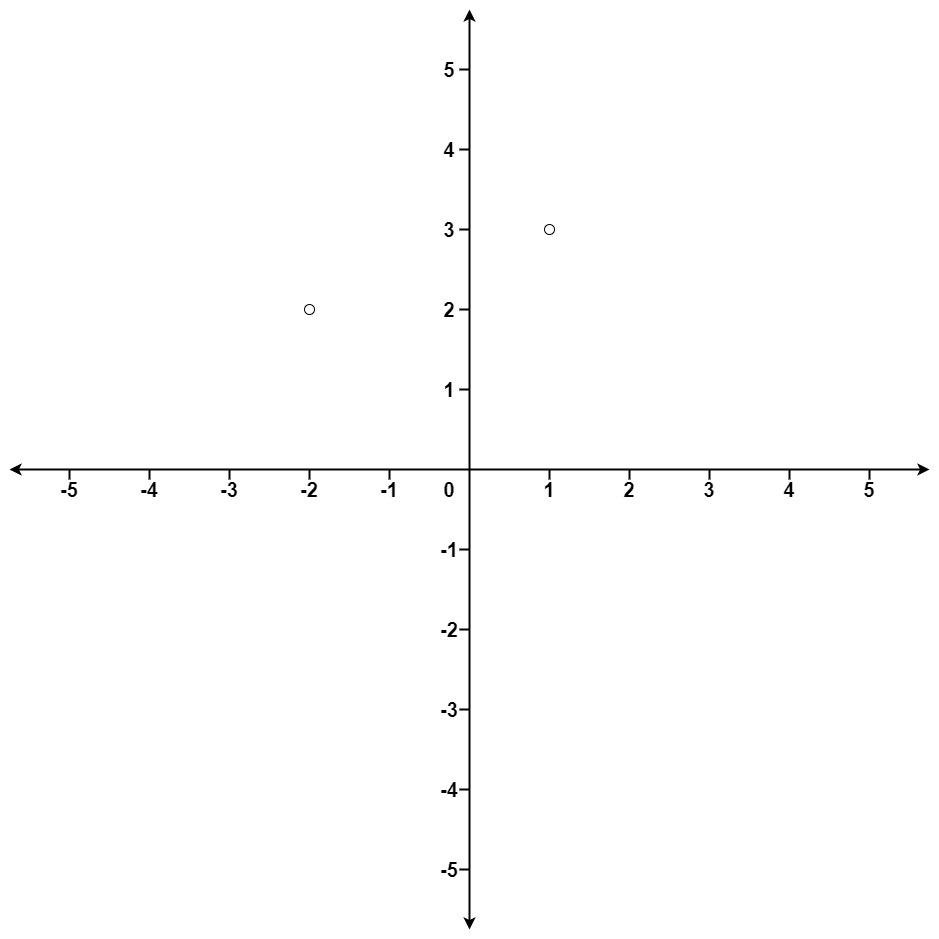Description
Given an array of points where points[i] = [xi, yi] represents a point on the X-Y plane and an integer k, return the k closest points to the origin (0, 0).
The distance between two points on the X-Y plane is the Euclidean distance (i.e., √(x1 - x2)2 + (y1 - y2)2).
You may return the answer in any order. The answer is guaranteed to be unique (except for the order that it is in).
Example 1:

Input: points = [[1,3],[-2,2]], k = 1 Output: -2,2 Explanation: The distance between (1, 3) and the origin is sqrt(10). The distance between (-2, 2) and the origin is sqrt(8). Since sqrt(8) < sqrt(10), (-2, 2) is closer to the origin. We only want the closest k = 1 points from the origin, so the answer is just -2,2.
Example 2:
Input: points = [[3,3],[5,-1],[-2,4]], k = 2 Output: [[3,3],[-2,4]] Explanation: The answer [[-2,4],[3,3]] would also be accepted.
Constraints:
1 <= k <= points.length <= 104-104 < xi, yi < 104
Code
priority_queue & multiset 的不同在於,要 implement max heap 時的 operator 在 priority_queue 中是 < 但是在 multiset 中是 >。
priority_queue (Max Heap)
Time Complexity: , Space Complexity:
注意 compare 的寫法:
// Using a custom function object to compare elements.
struct
{
bool operator() (const int l, const int r) const { return l > r; }
} customLess;class Solution {
public:
vector<vector<int>> kClosest(vector<vector<int>>& points, int k) {
// max heap
priority_queue<vector<int>, vector<vector<int>>, compare> pq;
for(auto& point: points) {
pq.push(point);
if(pq.size() > k) pq.pop();
}
vector<vector<int>> answer;
while(!pq.empty()) {
answer.push_back(pq.top());
pq.pop();
}
return answer;
}
private:
struct compare {
bool operator()(vector<int>& p, vector<int>& q) {
// max heap
return p[0] * p[0] + p[1] * p[1] < q[0] * q[0] + q[1] * q[1];
}
};
};multiset
Time Complexity: , Space Complexity:
參考:std::multiset, std::copy_n, std::back_inserter
class Solution {
public:
vector<vector<int>> kClosest(vector<vector<int>>& points, int k) {
multiset<vector<int>, compare> mset;
for(auto& point: points) {
mset.insert(point);
if (mset.size() > k) {
// since ordering is from max to min
// we pop the max
mset.erase(mset.begin());
}
}
vector<vector<int>> answer;
copy_n(mset.begin(), k, back_inserter(answer));
return answer;
}
private:
struct compare {
bool operator()(const vector<int>& p, const vector<int>& q) const {
// order from max to min
return p[0] * p[0] + p[1] * p[1] > q[0] * q[0] + q[1] * q[1];
}
};
};注意 partial_sort 和 nth_element 的 iterator 的 index 不一樣,在 nth_element 中是 points.begin() + k - 1 的原因是:
nth_element is a partial sorting algorithm that rearranges elements in [first, last) such that:
The element pointed at by nth is changed to whatever element would occur in that position if [first, last) were sorted.
partial_sort
Time Complexity: , Space Complexity:
class Solution {
public:
vector<vector<int>> kClosest(vector<vector<int>>& points, int k) {
partial_sort(points.begin(), points.begin() + k, points.end(), [](vector<int>& p, vector<int>& q){return p[0] * p[0] + p[1] * p[1] < q[0] * q[0] + q[1] * q[1];});
return vector<vector<int>>(points.begin(), points.begin() + k);
}
};nth_element
Time Complexity: , Space Complexity:
class Solution {
public:
vector<vector<int>> kClosest(vector<vector<int>>& points, int k) {
nth_element(points.begin(), points.begin() + k - 1, points.end(), [](vector<int>& p, vector<int>& q){return p[0] * p[0] + p[1] * p[1] < q[0] * q[0] + q[1] * q[1];});
return vector<vector<int>>(points.begin(), points.begin() + k);
}
};